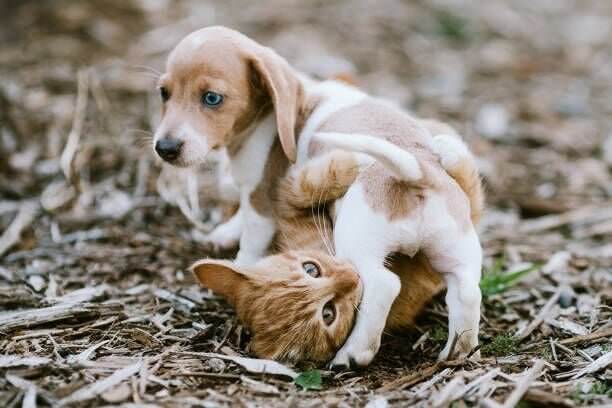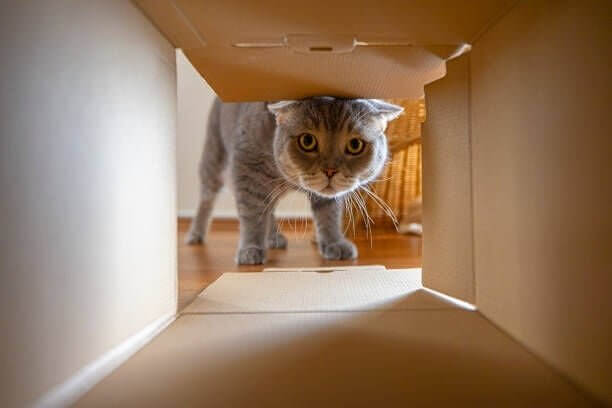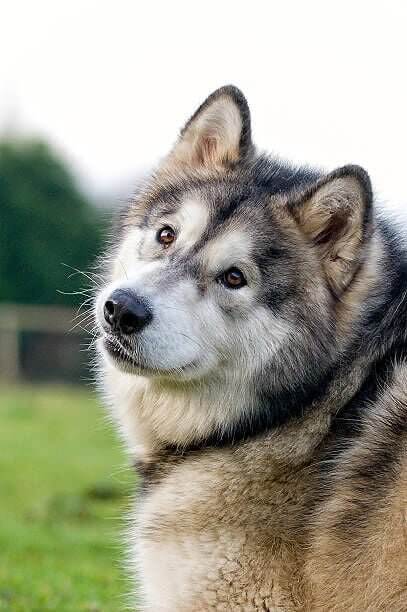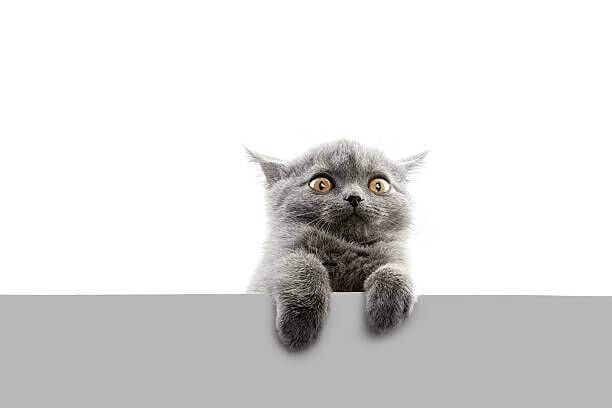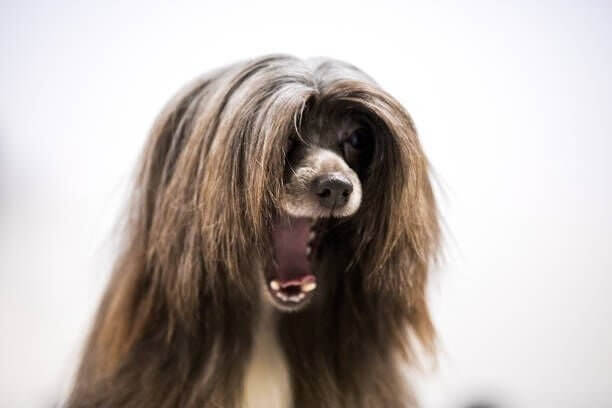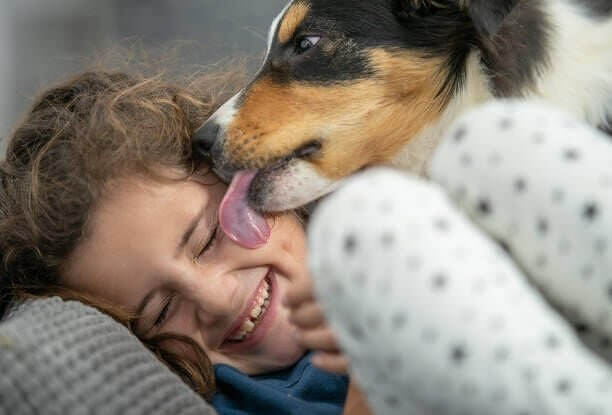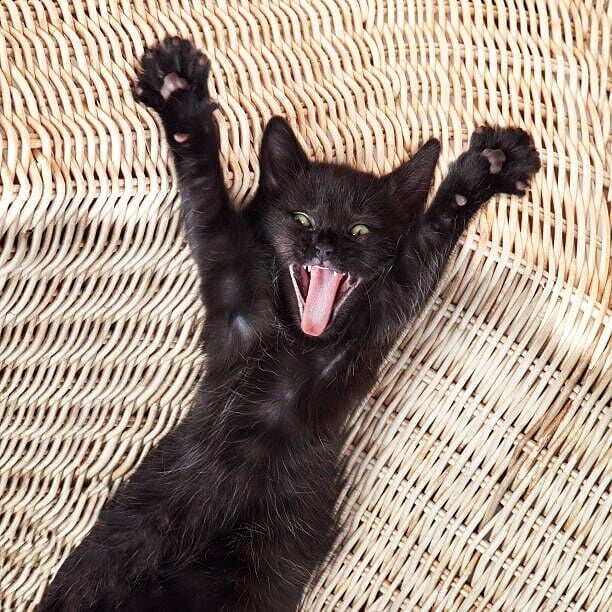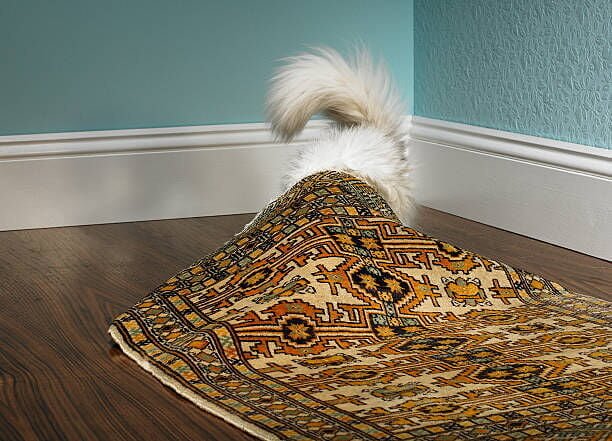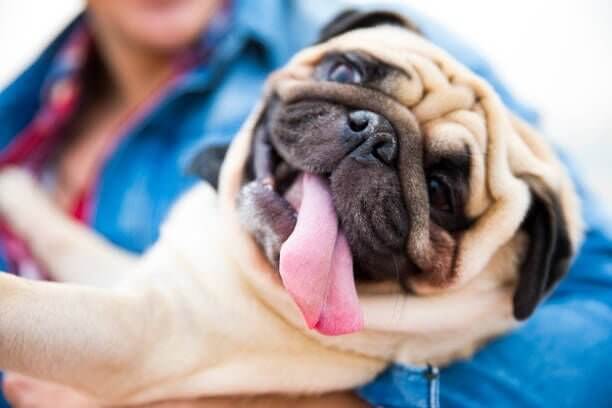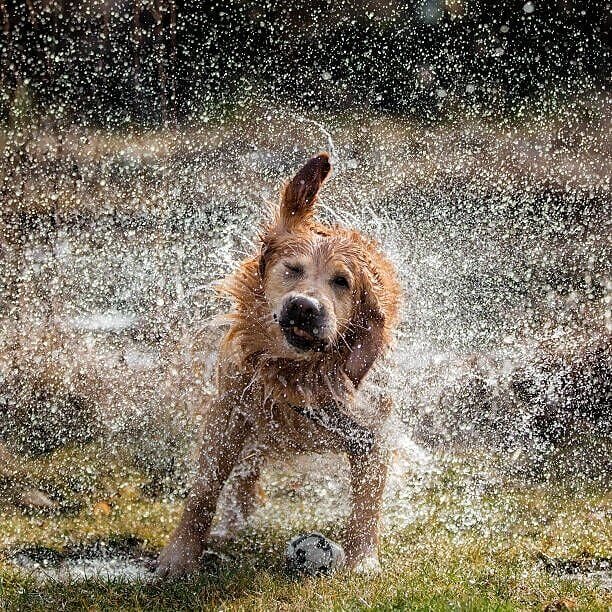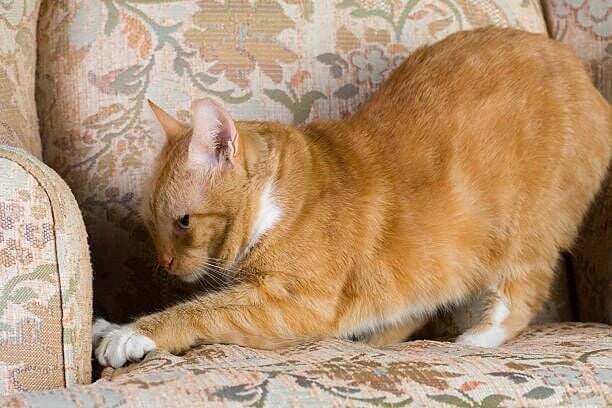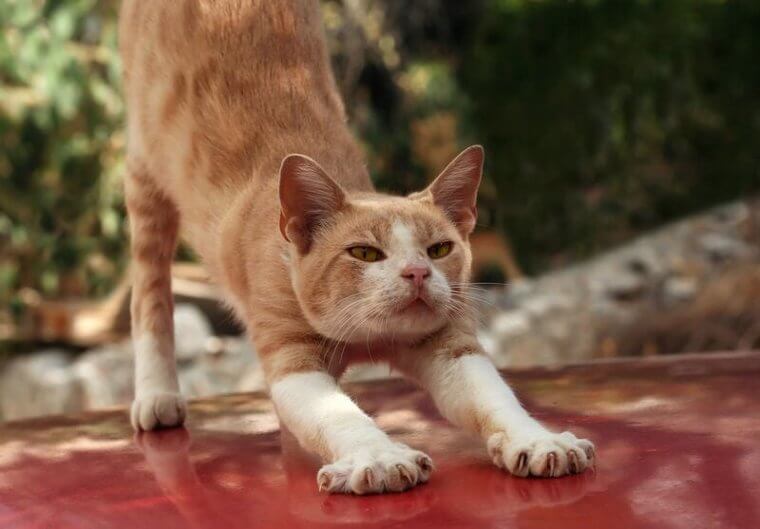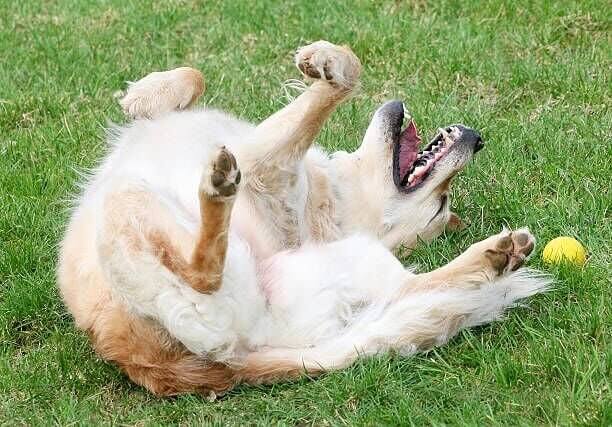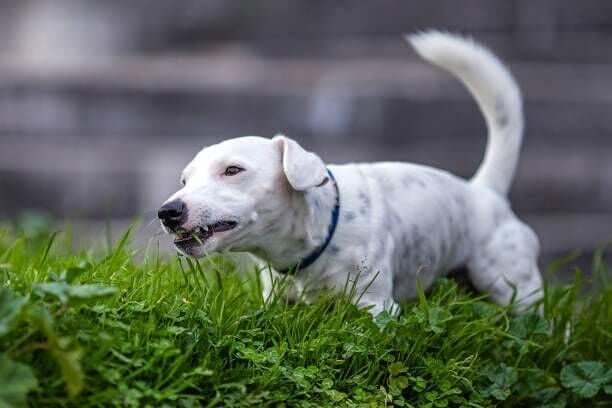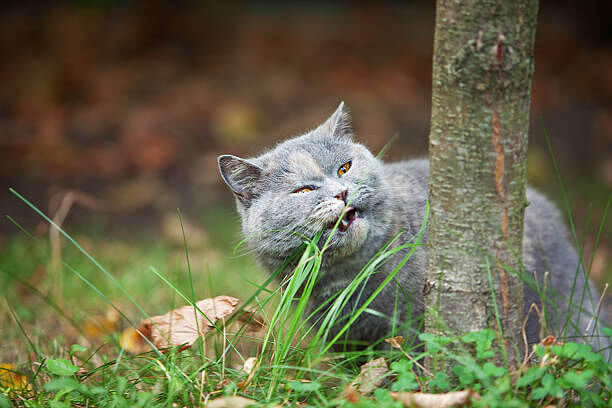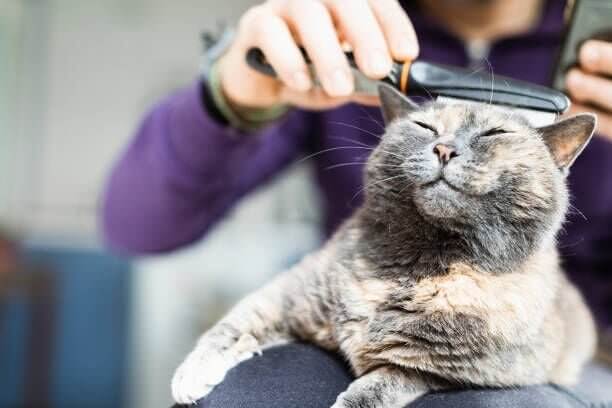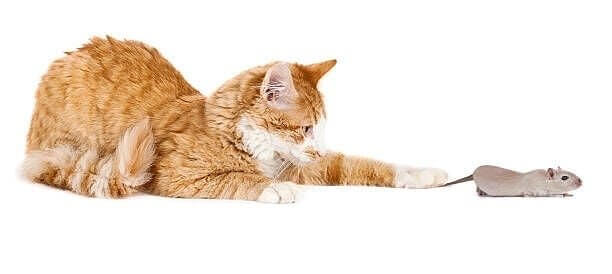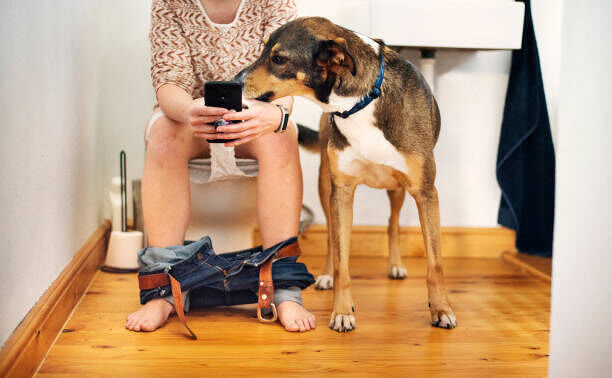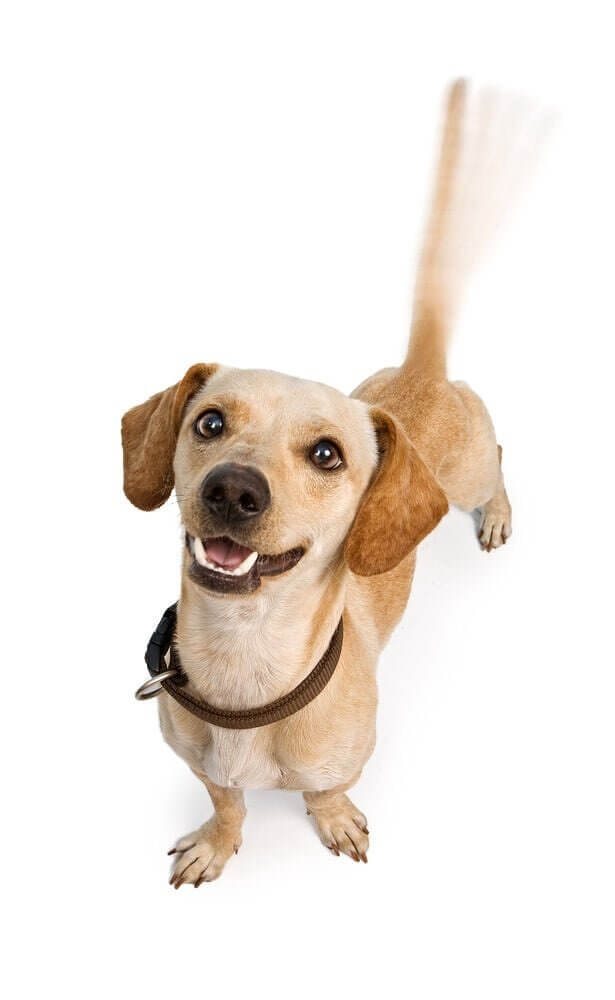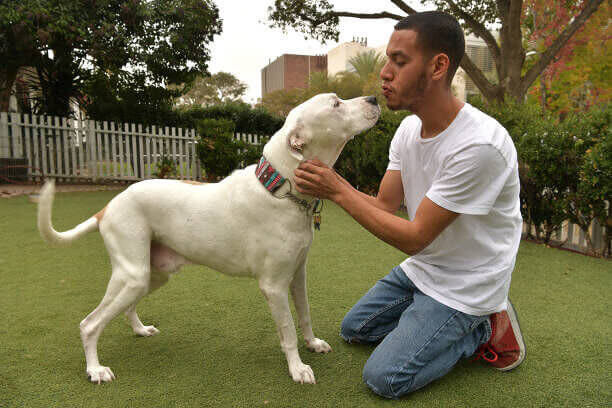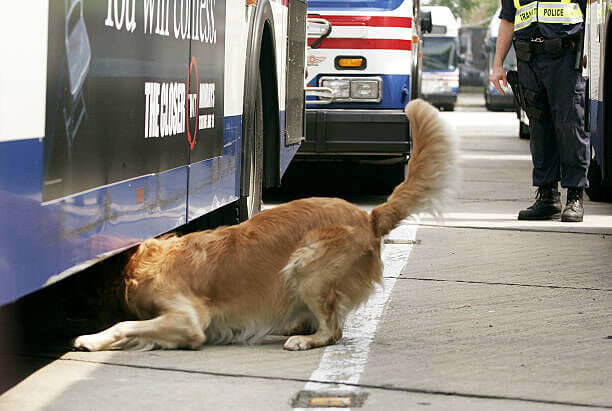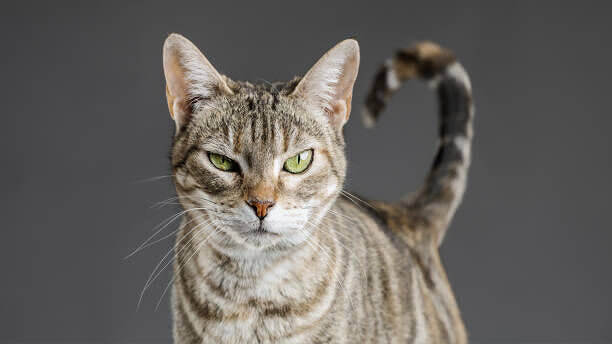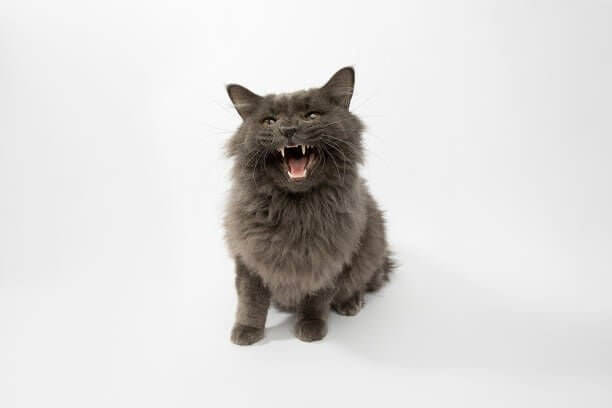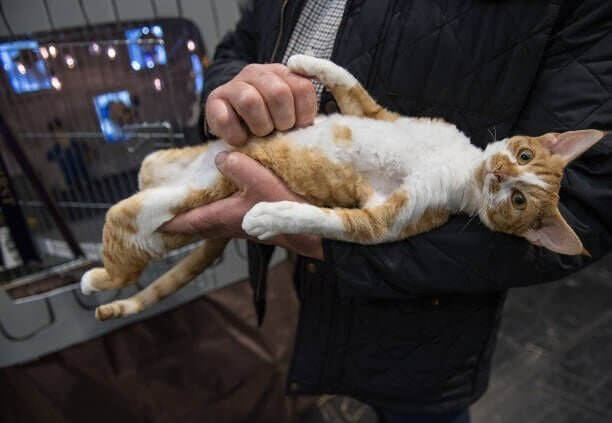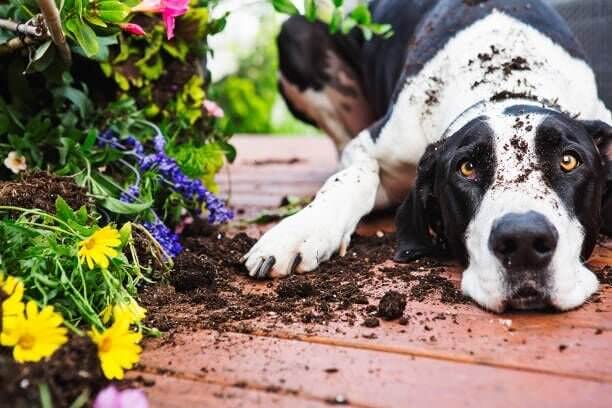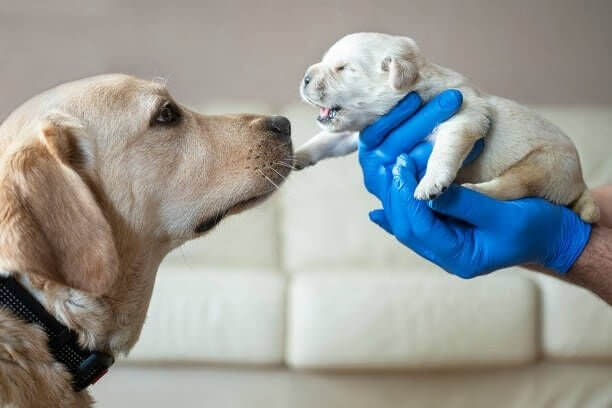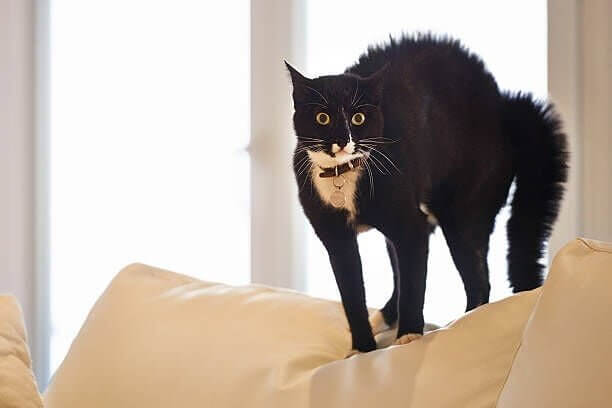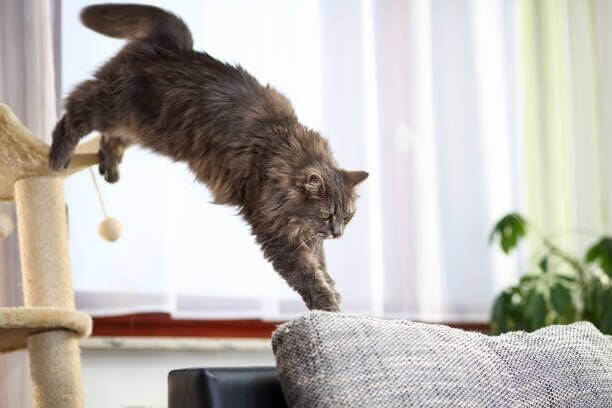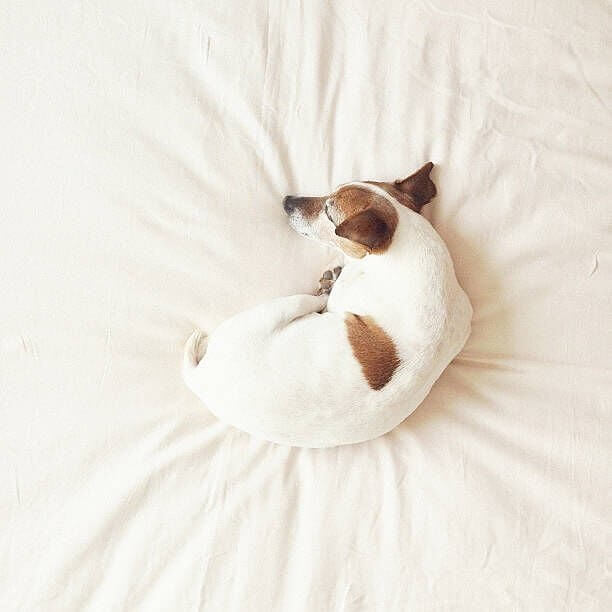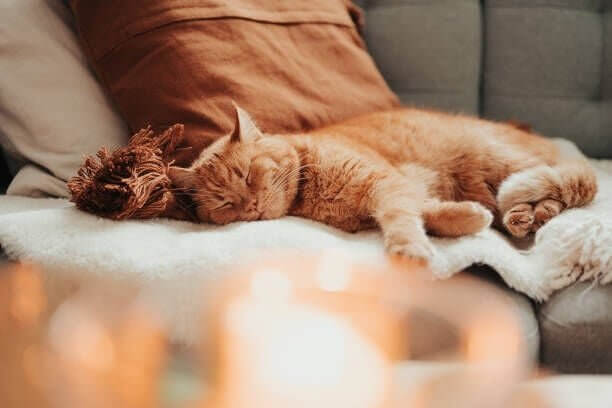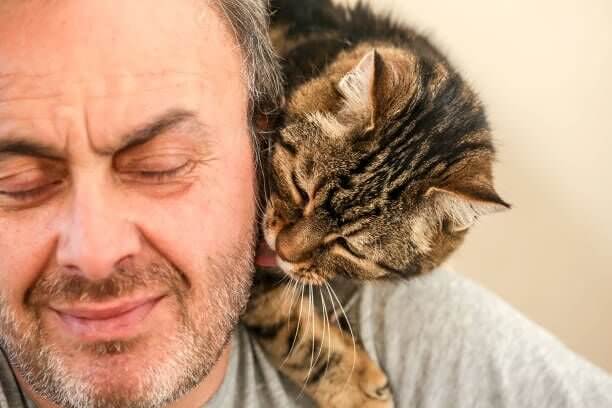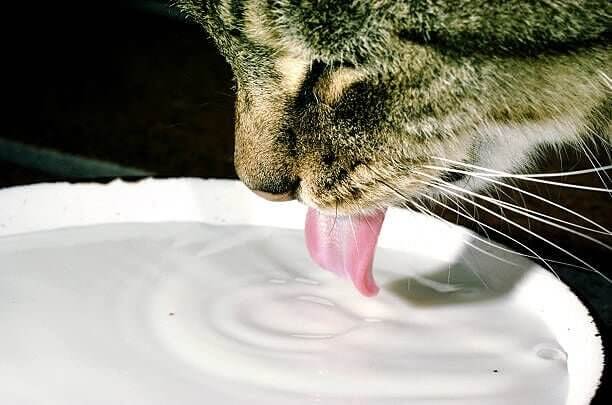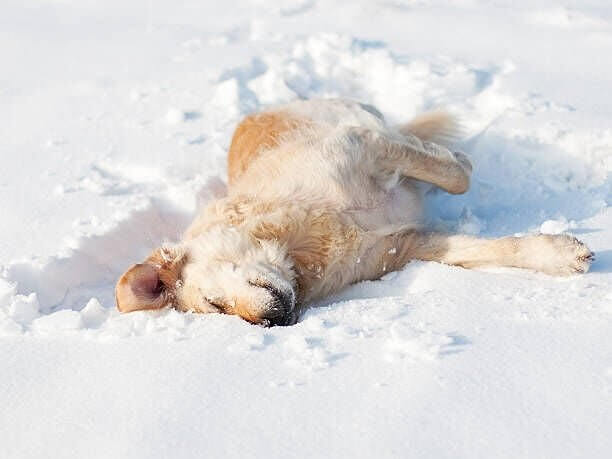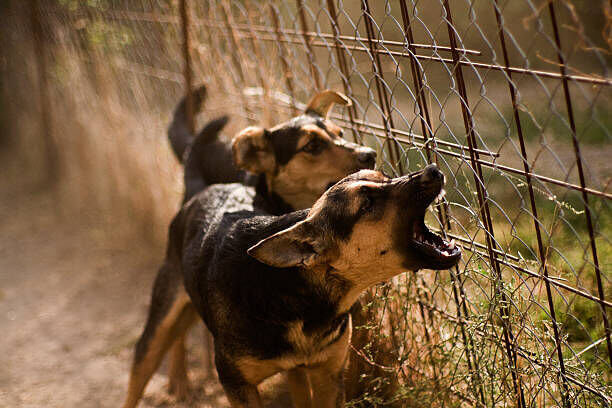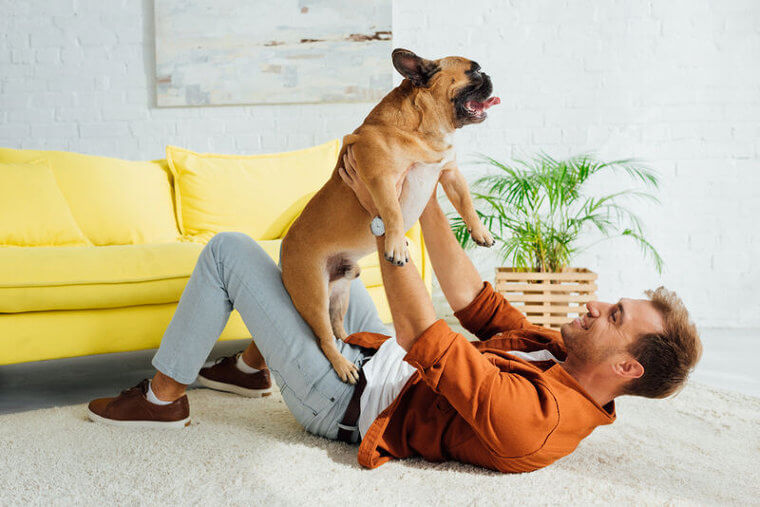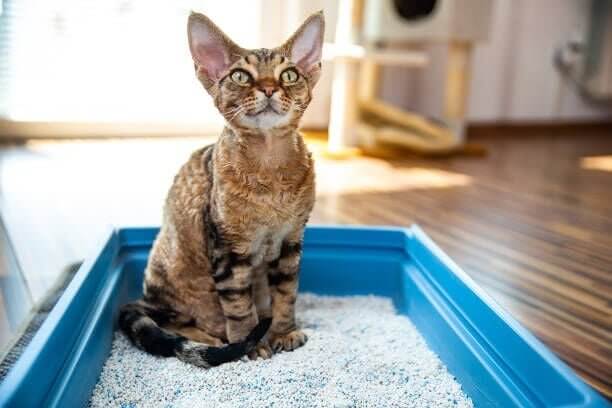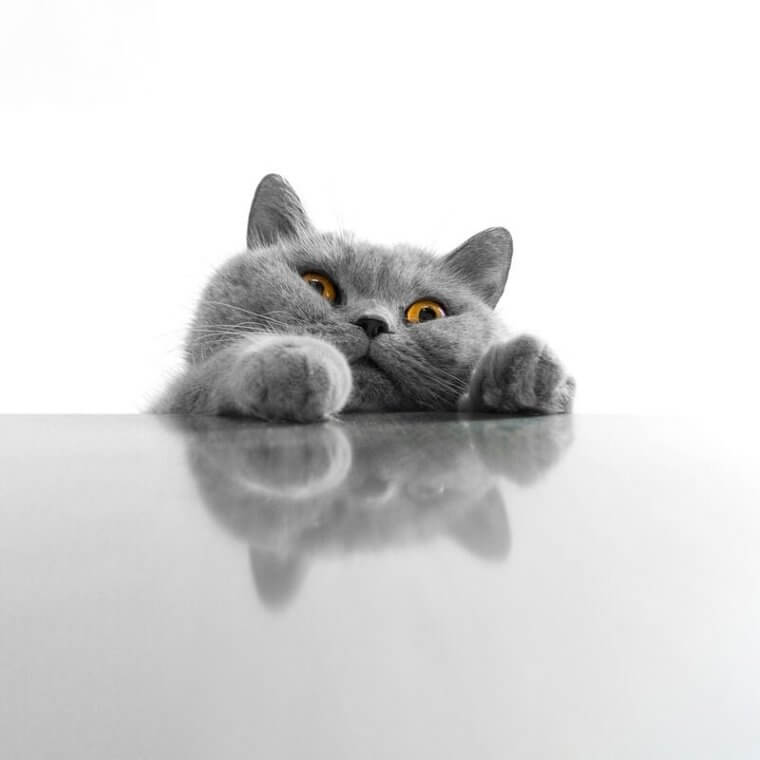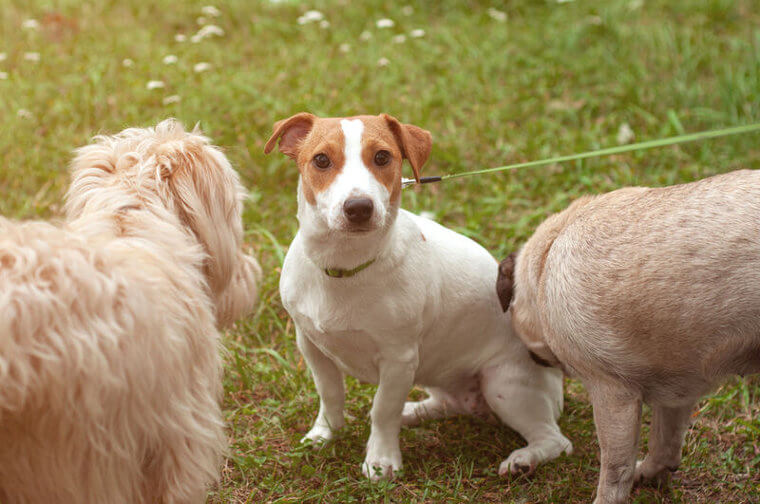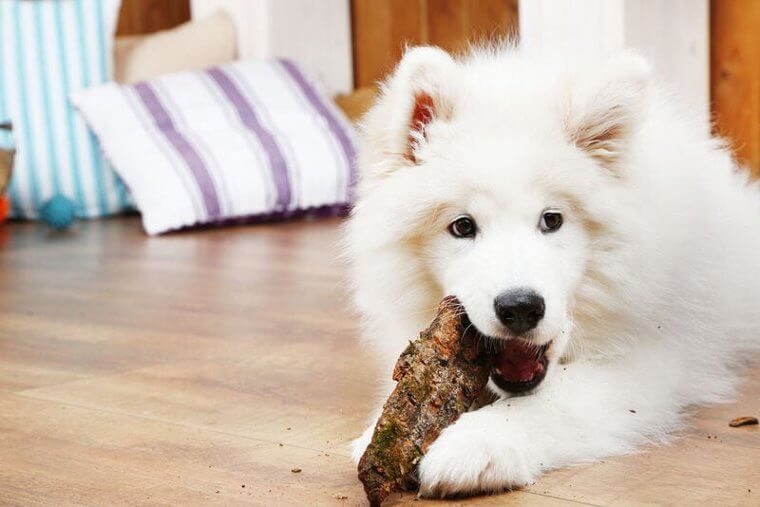Cats, once lone hunters, have retained some of their old characteristics. Dogs also still show habits proving that descended from domesticated wolves. Beyond enjoying their funny YouTube moments, have you pondered why cats adore cardboard boxes? Or why dogs engage in rear-end sniffing? Despite defying our logic, these actions make sense to our pets. The reasons are sometimes surprising, but they can't diminish our love for these cherished family members.
The Muzzle Cuddle
Pet owners are often shocked when they see their pup bite another dog’s muzzle. But this act isn’t something to be anxious about. This is a common social behavior acquired from their wolf ancestors. The dogs are validating their social ties – the dog being grasped is insecure and checking it’s still in the other dog’s good books.
Muzzle grasping is normal between dogs who are familiar with each other, but insecure pups often wish their humans would do it too. If your dog comes up to you while puffing its nose, softly grasp its muzzle and this will comfort it.
What’s in the Box?
Cats are notoriously obsessed with cardboard boxes. From little indoor cats to big tigers, they can’t seem to get enough of box time. As a matter of fact, they will find a way to fit themselves in one, even if they’re far too big for it. For domestic cats, these boxes offer a safe space, lessening their stress and anxiety.
Cats also like to lounge in places where they can observe others, but not be seen. They like to hide in boxes to keep themselves safe from predators and out of sight of potential prey. A snug box will also keep them warm. Of course, there may be more to their cardboard universe than this, but for now, we really don’t know.
The Head Tilt
Have you noticed when you talk to dogs, they often tilt their heads to one side? Apart from looking cute, why do they make this gesture? While scientists don’t have a clear explanation, they do have some hypotheses.
There are two plausible reasons for the mysterious head tilt. Dogs might be tilting their heads on the side to get a clearer view of your facial expression or they might be doing it to hear you better, by adjusting their floppy ears.
The ‘Flehmen’ Response
When you noticed a cat with a funny look on its face, it may be in the midst of a “flehmen” response. The weird look is characterized by an open mouth with lips drawn back. This grimace looks like an expression of disgust, but there’s more to it than that.
The flehmen response is, in fact, a smelling method. Instead of sniffing with her nose, the cat is drawing air through the vomeronasal organ, allowing it to pick up more subtle scents. Other animals like horses and tigers often do this too.
Doggy Yawns
When people yawn, it’s usually because they’re bored or tired (or both). But when dogs yawn, it does not necessarily indicate tiredness. Rather, it is often a pacifying behavior. The relaxed yawn is used to show peace and friendship to you or another dog.
While yawning may serve a physiological purpose in canines, it has also developed as a form of communication. It now forms an essential part of their social pack behavior. Note that hierarchy and superiority are crucial in a pack, so communication is important. When you yawn back, you’re accepting and returning the gesture of peace.
Face Licks
Dogs licking people’s faces can be endearing to some while others find it annoying and gross. Reality check: even some wolves do it to humans. What could be the reason behind this strange behavior? In simple terms, dogs do it to express affection and affirm that you’re a friend to them.
When they want to convince you they have no aggression in mind for you, licking your face is a dog’s number one tactic. And your best response to show them that you accepted their slobbery friendship? Just close your eyes, turn your head away, and yawn. Don’t fret too much about the germs on their tongue as they’re no worse than the germs you get from humans.
Crazy for Catnip
Did you know that cats are notoriously crazy for catnip? These adorable creatures rub their bodies all over the herb and even lick it up. This weird behavior is actually a response to nepetalactone, a chemical compound produced by catnip. While nepetalactone wards off insects, thus protecting the plants, it does something quite extraordinary to cats.
Scientists have found nepetalactone to be similar to cat pheromones. When the nepetalactone molecules enter a cat’s nose, they connect to the same receptor a pheromone would link to, thus signaling to the cat’s brain that there are tons of pheromones around. Hence the intense behavior!
Catnip on the Brain
According to new research, catnip does something quite remarkable to cats. The scientists discovered that catnip, through the molecule nepetalactone, actually stimulates not one but three parts of a cat’s brain. The hypothalamus is heavily stimulated, meaning sexual responses are triggered. And the amygdala, which is linked to emotions and decisions, gets a hit too.
Stimulation of the hypothalamus may be the reason why female cats roll around when in heat and when exposed to catnip. It may also be the reason why kittens don’t tend to react to catnip until they become mature sexually. Note that not all adult cats go crazy around catnip; the reaction is genetic.
Tongue Lolling
You’re probably used to seeing your pupper panting with its mouth open and tongue lolling out. But have you ever wondered why they do it? Well, dogs pant whenever they need to cool down or calm down as the evaporation of saliva gets rid of a lot of heat.
When dogs breathe hard and fast, they evaporate more water. Allowing the tongue to hang out boosts the amount of evaporating saliva and slows the blood circulating in the tongue. Don’t forget to give your dog water when it pants. While the loss of water is good for helping the pup cool down, they need to replace it to ensure they don’t dehydrate.
Shake It Off
You can always see it in your dog’s face when they’re about to shake. If they’re covered in water or mud, you’ve got maybe three seconds to get out of the way before you’re covered in it too. There’s an important reason for this cute (but sometimes frustrating) behavior. Fur can’t trap air when it’s wet, so dogs need a good system for drying off and staying warm.
Getting dry fast is important since they could get hypothermia if they stay wet in cold weather. Bears and mice also shake themselves to get dry. These creatures have to shake hard enough to burst the surface tension of the water. This means that smaller animals actually have to shake harder and faster than big ones
Scratching Anything
We can’t deny the fact that cats make adorable pets, but they can be annoying sometimes, especially when they scratch the furniture (and anything else in reach). But did you know that this is an important natural behavior for them?
Scratching is good for their claws because doing so gets rid of the dead outer layer of the nail. It’s also a way for cats to mark their territory. Since our feline friends are territorial, they are used to living alone and don’t like other cats invading their space.
A Good Stretch
Aside from marking their territory and grooming their nails, scratching helps cats stretch their shoulders and back muscles. This is why they’ll often go for furniture over small scratching posts – they need an area big enough to allow them to get a full stretch.
If your cat has perfectly good scratching posts but still goes for your furniture, it’s likely that the behavior is serving as an emotional release and stress reliever. Your cat will tend to do this when it’s worried, frustrated, or excited. No matter the reason for your cat’s scratching, be sure to provide a tall scratching post to encourage it to lay off the furniture.
Rolling in the Grass
Dogs get pretty excited when they spend time outdoors, especially if they have the chance to roll around in the grass. They likely get so much joy out of doing this because it satisfies the genetic impulses of their wolf ancestry. Wolves roll around in any scent they find intriguing so they can absorb it and then bring the odor back to the pack.
If the other wolves in the pack like what they smell, they may all run back to its source. For modern pups, their family is their pack, so they are likely looking for interesting smells to bring back to you. Of course, your pup may just be getting a good back scratch from its roll in the grass.
Grass-Eating Dogs
When dogs are not rolling in the grass, they’re eating it. Though it’s not always the case, they do tend to do this when they’re feeling under the weather as eating a bunch of grass will make them vomit. However, this only happens occasionally. So what’s the main cause of their appetite for grass?
Dogs were once scavengers who had to stuff their hungry tummies with whatever they could find. This is why they’re pretty much down to eat anything, including grass. If you’re worried about your dog’s health, don’t panic – the grass is a rich source of fiber and minerals, so your pet will be fine.
Grass-Eating Cats
When cats go outside, they love lounging in the sun, which seems natural, but then when they start snacking on the grass it can leave you a little surprised. Especially when they promptly throw up the grass they just ate. Despite the vitamins that grass provides, cats can’t digest plants. So, why bother munching it in the first place
If a cat eats grass, it’s usually because they’ve decided they need to puke up something that’s not sitting well in their digestive tract. The problem is often caused by the feathers, fur, and bones of their prey. Even if your pet cat doesn’t get a chance to eat live animals, they can sometimes still engage in this behavior on instinct.
The Cryptic Purr
Any cat person will understand how soothing and comforting that purring sound is. It’s hard not to be happy with a content purring cat on your lap. While cats often purr when cuddling, they also do it on other occasions, like when they’re giving birth or in pain. Since it’s represents so many different emotional events, it isn’t considered a form of communication.
As a matter of fact, scientists think purring is a type of self-medication. Astonishingly, the low frequencies of a cat’s purr can create an improvement in bone density. As such, cats are purring to preserve healthy bones. It’s even possible that your bones could benefit from being next to your cat when she purrs!
Strange Gifts
Are you confused and horrified whenever you come home and see a dead rodent or a wounded bird? Your cat will never understand your disgust. It went out and took the time to catch this animal especially for you. Remember that when wild cat mothers nurture their kittens, they begin teaching them how to hunt by bringing back wounded prey.
For cat lovers, it’s wise to learn to appreciate your cat’s hunting skills by welcoming its gifts. When your cat brings you its catch of the day, it’s probably trying to coach you on how to hunt since, in the cat’s estimations, you don’t seem to be having much success getting decent food. Really, you should be grateful for such a sweet act.
No Privacy
Dogs just don’t seem to understand the concept of privacy. They will happily follow their owners into the bathroom, which can be pretty awkward. While it’s good to know that you have a bathroom buddy when you’re out in the woods, having one in your home is not necessary.
We can blame this weird behavior on their wolf ancestry – since you are part of your dog’s pack, guarding you while you go to the bathroom is an important way for it to show its loyalty. If your pup consistently follows you everywhere, it likely thinks you need to be protected at all times.
Tail Wags
Dogs are perhaps most famous for their adorably happy wagging their tails. While a dog’s tail wag is thought to exude happiness and friendliness, the action is far more nuanced than that. For instance, if your pup is wagging its tail slowly, this means it’s feeling uneasy.
But if the tail wagging is vigorous, it means something else entirely. Exuberant tail-wagging usually indicates an excited and happy pup. However, a number of studies suggest that if the dog is wagging on one side of the other, this can add extra layers to what they’re trying to express. Who would’ve thought a dog’s tail wag could mean so much?
Anatomy of Wagging
Let’s look a little deeper into the anatomy of your dog’s tail wag. If your pet wags more to its right side, this communicates that it sees something it wants to approach. Usually, this is the human it wants to interact with. But if the wag is more to the left side, the dog might be seeing something it doesn’t like.
More on the Tail-Wagging Business
Astonishingly, we still haven’t covered all the nuances of this tail-wagging business. If the dog wags its tail in wide arcs, it’s likely expressing a more positive emotion than if it’s wagging in slow movements. As you can see, dogs use their tails to communicate a variety of subtle emotions.
If your pet lowers its tail between its legs, this indicates it’s feeling submissive, scared, or anxious. However, if your dog holds its tail high, it might have seen something dangerous or something interesting. For a middle tail height, your dog is likely feeling happy and relaxed
The Raised Tail
Cats rarely wag their tails the way dogs do. However, their tails are just as expressive. When a cat approaches you with its tail held high, it’s clearly greeting you, so your best response is to offer your hand for a sniff or give it a little head rub.
The cat is then likely to rub its head on you to mark you with its scent. If it’s a new cat that you’ve just met, it’s approaching you in this way to get to know you. Interestingly, the approach cats take to humans is almost identical to the approach they take with greeting other cats.
The Cat’s Meow
We all know the basics: dogs bark and cats meow. But why do they make these specific sounds? If you’re a cat owner, you probably know that meows can mean many things, depending on the situation. Plus, it differs between individual cats. But did you know that cats only meow to humans?
Yep, kittens meow to their mama cat when they feel cold, scared, or hungry. But adult cats don’t meow to each other. Their forms of communication are scent marking, hissing, and growling. So when your kitty is meowing, it wants to be fed or just maybe just wants to greet you.
The Exposed Belly
Cats are famous for showing their belly and then attacking if you attempt to rub it. While most cats don’t like their bellies to be rubbed, there are rare cats that will actually let you. And the moment that they expose their tummy, you are one lucky person as they’re doing this to show that they trust you.
In a twist of irony that’s horrifying for the cat, most of us then immediately break that trust by doing the last thing the cat wants us to do – attempting to rub its belly. A cat’s belly is its most sensitive body part because it protects its vital organs. So, confirm your trustworthiness by petting your cat’s head instead of going in for a belly rub.
The Act of Burying
You might be annoyed at your dog for digging in your backyard and burying an assortment of things like food and toys, but your pup just isn’t capable of forgetting its instinctual behaviors so fast. You have to consider the reality that food is a precious resource out in the wild.
Our pets’ ancestors once buried food so they could eat it later when they needed it most. If they collected too much food for one meal, they’d hide it away in a secret hole. Now you know that your garden isn’t entirely yours – it’s also your dog’s refrigerator.
The Things Dogs Eat
Momma dogs sometimes throw up next to their pups, not because they’re sick, but to feed them. These adorable pups could just go directly to their food bowl and eat from there, but this behavior is a throwback to a time when they didn’t have such easy food sources.
Out in the wild, wolf cubs aren’t capable yet of hunting for their own food, so their parents’ help is crucial. It might look gross to us, but the momma dog is trying her best to keep her babies healthy.
Making Biscuits
One of the weirdest things our feline friends do is “making biscuits” (as cat people lovingly call it). Like a chef kneading dough, they will happily knead their paws on furniture, blankets, and their owners. Why did they develop this cute (but painful) habit? Many scientists think it’s a neotenic behavior, which means it was a juvenile behavior that adults just kept on doing.
Kittens knead their mama cats’ bellies to stimulate her to make milk, and since some adult cats also knead when they breast-feed, this interpretation makes sense. Interestingly, wild cats ditch the kneading when they grow up. Though house cats are wild cats are related, domestication has clearly changed our pets in many ways
The Purpose of Kneading
As we just learned, kittens knead because it’s crucial for getting milk, and wild adult cats stop doing it as soon as they stop breastfeeding. So, what’s up with our house cats and their kneading obsession?
Well, neotenic behavior most likely persists in pet cats because humans selectively bred friendly and less assertive animals. Over the years, we favored kitten-like behavior when breeding cats, which makes sense as it’s both cuter and safer. Through this process, kneading has become a means for adult cats to show they love and trust you.
Circling Before Bedtime
After a long day, all you want is the comfort of your bed to relax and get a good night’s sleep. Then your dog wants to join you but insists on circling a spot multiple times before settling in. Why do they do this? Back when they lived in the wild, dogs had to make the ground fit for sleeping somehow.
Grass and dirt aren’t as comfortable as a big soft bed, but dogs knew how to make it work. If sleeping in a grassy area, the animals would stroke down the tall grasses, hence the circling. The strange behavior might also have served to scare away any reptiles or insects in the vicinity.
Sleepyheads
We’re sure you’ve noticed your pet cat is so fond of sleeping they can do it all day. Indeed, after a long day at work, one look at your resting cat can have you wishing you had the same luxuries. Though it may seem decadent, one of the prevailing theories on cat sleeping habits is that they’re reserving energy for hunting.
Hunting saps a lot of energy, but getting plenty of sleep ensures the cats have strength in reserve. Another logical explanation is that their prey usually comes out at dawn and dusk, so there’s not much point being awake at other times. If you watch your cat, you’ll likely find they’re most lively in the early morning and evening.
Kitty Kisses
It looks and feels cute when your pet cat licks you with its sandpapery little tongue. It shows they really do care about you. But after too many licks, that sandpaper feeling is too rough on your skin. So, why are they so persistent when licking you?
Cats are amazing because you don’t need to bathe them thanks to their sharp tongue. They will often groom members of their family, so when your cat gives you a lick, it means it considers you part of its family (but also thinks you could use a bit of cleaning).
Sandpaper Tongues
Cats also lick (and bite) you for attention. They may want to play with you or may have smelled something interesting on your skin that they want to taste. If your cat is prone to excessive licking, however, this could be a sign of anxiety.
Unless you notice other signs of stress, though, your cat is most likely just being super affectionate. Cats lick each other all the time, so it might be showering you with love and sweetness in hopes of getting affection in return.
Rolling Over
With dogs, frequent rolling over can be a surrendering behavior to curtail aggressiveness. However, during playtime, it means something different. Researchers have observed that when dogs are at play, rolling over doesn’t indicate submissiveness at all.
Rather, it means the dog is super excited to keep playing. Sometimes, they roll over to protect themselves from a play bite. But they may also keep on rolling to get into a great position to give a play bite. Sometimes bigger and stronger dogs will roll over to give smaller dogs and puppies a better chance in the play fight.
Barking
Excessive barking is one of the biggest complaints when neighbors have disputes. Yet wild wolves don’t bark much at all. So, why are our domesticated pups so noisy?
Dog barks have different meanings. Have you noticed when they bark at a stranger it sounds entirely different than when they bark during play? It seems that the sound of their barking has something to do with their domestication and the reality that they were bred to be protectors rather than silent hunters.
Excited Pups
As a dog lover, you can’t help but smile when you get home to an exuberant greeting from your loyal pup. Indeed, their excitement is sometimes so extreme it’s as though they haven’t seen you for weeks, even if it’s only been a few hours. Why are they like this? Scientists analyzed dog brain scans and discovered the smell of familiar humans stimulates their brain’s reward center like crazy.
Scientists also did an experiment and discovered that the reunion of a dog and its owner produces a similar reaction to a reunion between a human mother and her child after they’ve been separated for some time. Dogs are social creatures and don’t like to be left alone, hence the excitement when they see you come home.
Litter Box Training
While dogs need dedicated training to understand that they need to do their business outside, cats are easily trained to use a litter box. In fact, many people find their new kitten will automatically use the box, no training needed. How on Earth is litter box training already encoded in their thinking?
It turns out that cats and kittens like to hide their poop to conceal the odor from other cats and predators. Soft dirt, litter, or sand are perfect for achieving this, and cats will seek out the ideal spot. The exception to this rule is that dominant cats often won’t hide their feces as they use it to mark their territory.
Climbing the Walls
Here’s a fact: cats love to climb, and they love to go as high as possible. They don’t care in the slightest if they destroy your furniture or curtains in the process. They do this because they want to have a clear view of their territory while also protecting themselves from potential threats.
Climbing gives cats a clear overview of the house, which they 100% believe is theirs, not yours. That moment in The Lion King was an apt portrayal of cat behavior. Whenever a cat has climbed your curtains, you can guarantee it’s thinking to itself: “Everything the light touches is mine.”
The Butt Sniff
When dogs smell each other’s butts, we humans tend to see it as gross behavior. But from the dog’s perspective, this strange act isn’t gross at all. They’re just introducing themselves to each other. Think of it as the puppy version of a handshake. On either side of a dog’s butt there are glands that produce a variety of chemicals.
These glands tell the sniffer about the reproductive status and gender of the dog. Its diet, health, and emotions can also be read. Did you know dogs can smell 10,000 to 100,000 times better than humans? This is why they communicate using these chemical signals.
Chewing
Although it looks and sounds annoying, dogs love chewing on things for many reasons. For adults, it keeps their teeth clean and strong. For puppies, it can ease any pain they have from their growing adult teeth. But if your pet only chews when you’re away, it might be experiencing separation anxiety.
If your pup is a licker who keeps chewing things whenever it’s left alone, it might have been weaned from its momma too early. Alternatively, your dog may be chewing things for the simple reason that it’s hungry. Note that wild adult dogs love to chew on bones for fun and to release stress.

